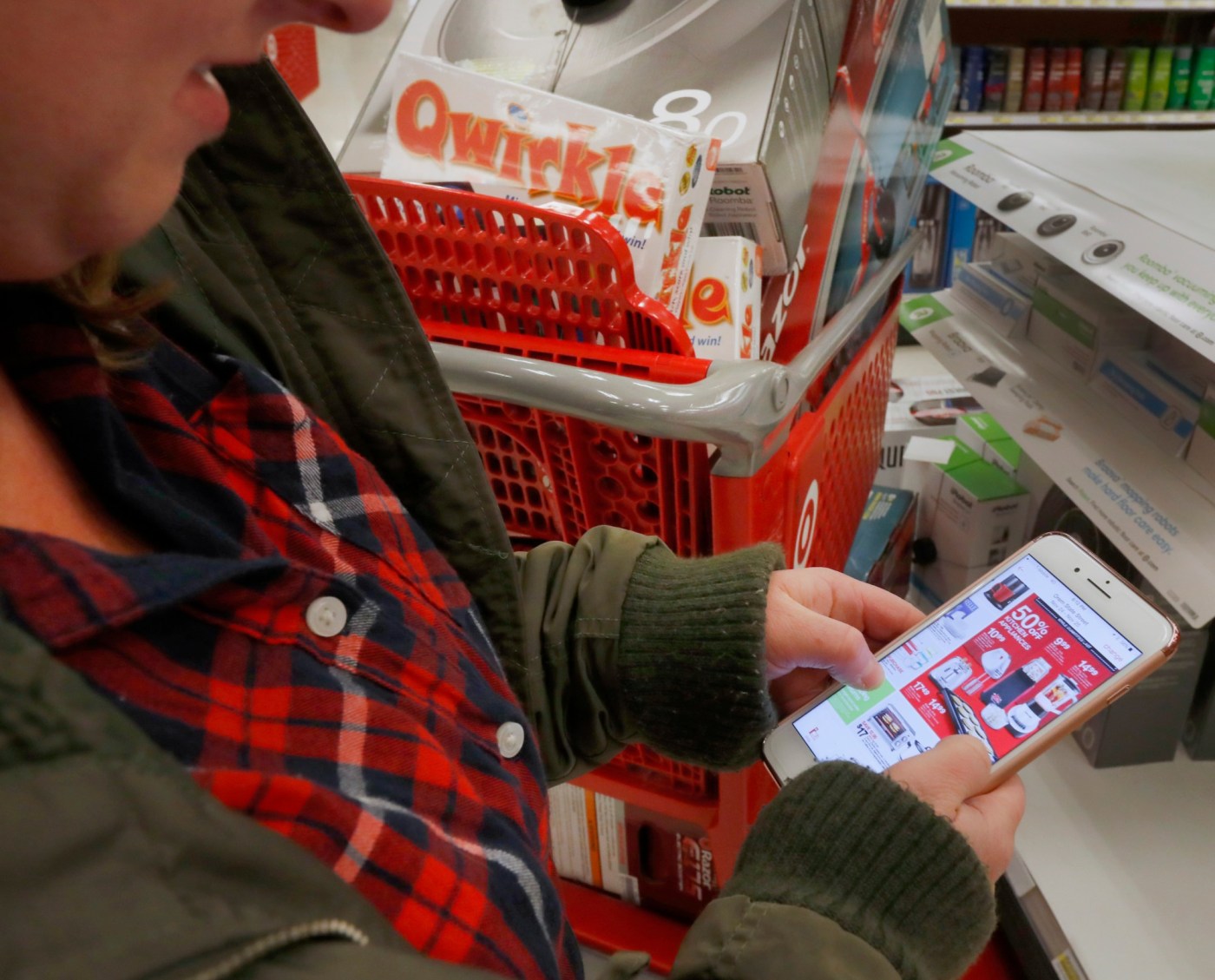By Amanda Barroso, NerdWallet
If it feels like prices are on a roller coaster ride during the holidays, you’re not imagining things.
Strategies such as dynamic pricing and surge pricing mean that prices may change based on supply and demand, competitor pricing and a shopper’s browsing habits or location. Some price changes happen at regular intervals, while others happen in real time.
Black Friday is “the perfect storm for using dynamic pricing,” says Lisa Bolton, a professor of marketing at Pennsylvania State University.
How will dynamic and surge pricing impact your Black Friday shopping experience this year?
Dynamic pricing vs. surge pricing: You’ll see both
Because of their popularity in retail, travel and entertainment industries, you’ve probably experienced both dynamic and surge pricing. The main difference between dynamic and surge pricing is that dynamic pricing is just that — dynamic — prices move up and down, depending on a variety of factors. Surge pricing, on the other hand, “is a particular type of dynamic pricing where prices are raised when demand is high and supply is limited,” Bolton says.
Dynamic pricing shows up on retailer shelves that feature digital price tags where the cost of an item can change daily. You might experience surge pricing when you book a car on a rideshare app during rush hour or try to book a flight over a holiday weekend.
Bolton says dynamic pricing gives retailers multiple advantages, including tailoring their promotions, giving personalized discounts and adjusting their prices to beat competitors, so expect to see all of these strategies this year.
Real-time price wars
Big retailers with an online presence such as Amazon, Walmart, Target and Best Buy use dynamic pricing to match or beat their competitors.
Don’t confuse this with traditional price-matching policies for shoppers. Some retailers, such as Amazon and Walmart, don’t offer price matching for consumers, but they are constantly monitoring and adjusting their prices behind the scenes, based on what their competitors are doing.
Regardless, retailers expect shoppers to do the research and compare prices, so you must be agile if you want to get the best sale, especially for bigger ticket items.
Deals based on browsing history or location
If you’re shopping online this season, your browsing history and location are two data points retailers use to offer personalized deals. Bolton says retailers might know:
If you’ve searched for an item before — this could indicate how strong your preference is for a specific product.
If you’ve looked at competitor websites for the same product — this could indicate that you’re willing to shop anywhere to find the lowest price.
If your local stores have a lot of inventory — this could lead to a larger discount so the retailer can offload the item.
From a consumer privacy perspective, there are downsides to retailers tracking your online movements. However, putting up privacy walls, such as clearing your cookies, could cause you to miss out on some of those personalized offers.
Member discounts and loyalty perks
Sometimes it pays to be a member. This has been true for years, whether that’s getting special deals at the grocery store or belonging to a wholesale club. However, when it comes to Black Friday, some retailers are offering members special discounts or early access to sales.
Amazon is a great example: A Prime membership comes at a cost, but it gets you special deals such as Prime Day, plus other access to products and sales, while people who aren’t members are shut out.
By making membership a hurdle to accessing Black Friday sales, retailers hope to build a loyal shopping base that will keep coming back, Bolton says. And come back they will, especially if retailers continue offering better pricing to loyal shoppers.
What’s in it for consumers?
Airline ticket pricing is one example of how dynamic pricing can benefit consumers, Rachel Chen, a professor at the University of California at Davis, said in an email interview.
Related Articles
How much does Instacart pay? I became a full-service shopper to find out
Higher monthly payments loom for many student loan borrowers
Jill On Money: Market reaction to Trump 2.0
Don’t sleep on Black Friday, Cyber Monday travel savings this year
Manufacturing already has made a comeback
Dynamic pricing means people who want to travel during peak times will pay extra, while those with more flexibility to travel off-season or during non-peak times will be able to save money.
“Dynamic pricing also incentivizes companies to stock and manage inventory better, which can lead to more consistent product availability,” Chen said.
But constantly changing prices can also backfire.
“In some markets, dynamic pricing is well-accepted,” Chen said, citing Uber surge pricing as an example of a cost some customers are willing to pay.
“In other cases people will walk away from the business if dynamic pricing is used,” Chen said.
So while consumers aren’t paying a premium, they’re not getting the goods or services they want or need, either.
Research is the cure for dynamic pricing frustrations
Consumers generally don’t like dynamic pricing, Bolton says.
“They tend to view it as unfair,” Bolton says.
Consumers worry that other shoppers might be getting a better deal and express annoyance with quick price changes from day to day.
Dynamic pricing “can hold consumers back at times,” she says. “Especially when they’re trying to judge, ‘OK, when’s the right time to buy?’”
With a retail environment rich in dynamic pricing strategies, “it becomes a lot harder to judge when you feel like you’re getting a good deal,” Bolton says.
That can be frustrating for consumers who are driven to make purchases when they feel like they can save a lot of money.
If you’re an avid Amazon shopper, Camelcamecamel is a free browser extension you can download to see how the price of an item has changed over time. For a wider selection of retailers, the PayPal Honey free browser extension will do the trick. You can set price tracking alerts, and it even helps you find coupon codes to apply to your purchase.
“You really have to have watched the marketplace for a while to get a sense for what the real price is,” Bolton says. “There’s so much fluctuation, you really have to do that homework, so then you are in a position to know it’s a good deal.”
More From NerdWallet
Best Black Friday Deals: When to Shop, What to Buy and What to Skip
When is Cyber Monday? Everything You Need To Know
3 Reasons to Involve Your Kids in Small Business Saturday
Amanda Barroso writes for NerdWallet. Email: abarroso@nerdwallet.com.
The article What Dynamic Pricing Means for Black Friday Shopping originally appeared on NerdWallet.












